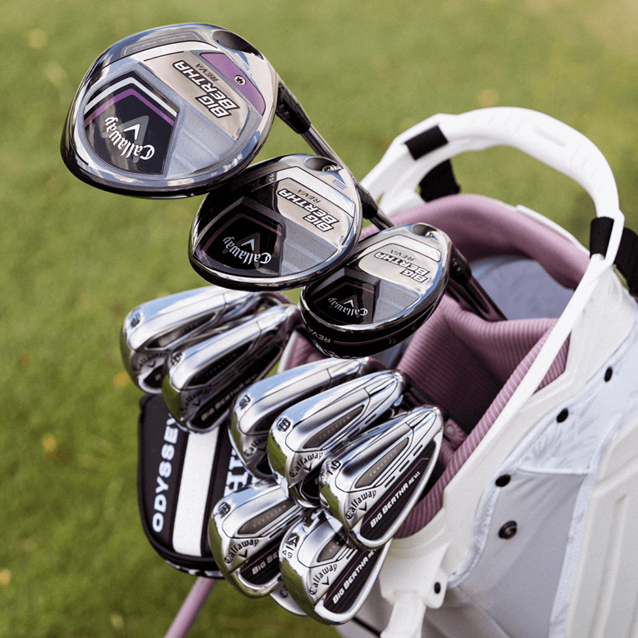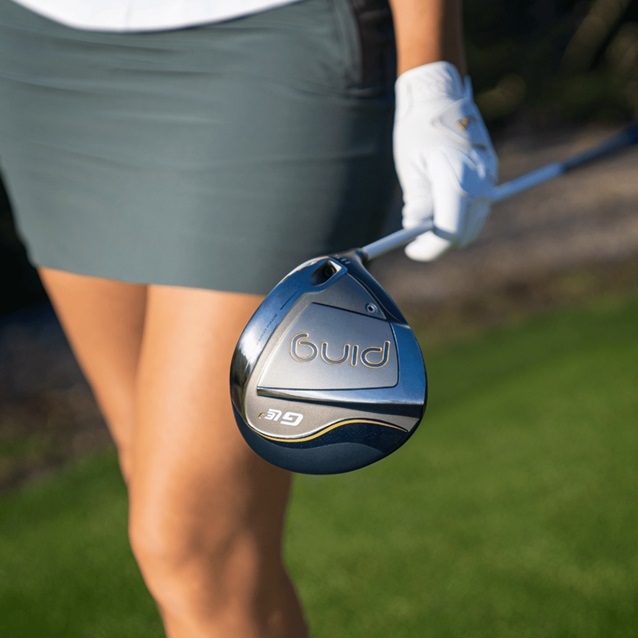Advance the Ball: Important Factors to Consider When Choosing a Women’s Golf Driver
The driver is, without a doubt, the most exciting tool in our golf bag. When you hit the ball well, it can help you locate more fairways, acquire better distance, thus shortening your approach shots for more par and birdie opportunities.
However, when it comes to choosing the right driver, there is no such thing as a ‘one-size-fits-all’ ladies club. Given the different loft and centre of gravity possibilities, adjustable weighing and other devices, and the all-important shaft, it may be confusing and difficult for the typical lady player to understand – from loft to launch to CG, there’s a lot to learn. So, the following guidelines might give you a hand.
What Makes Up a Good Driver for Women?

Using a carefully designed and powerful women’s driver for golf can increase the game performance skills. Generally, there are two aspects of what makes up the ladies’ drivers.
The first is what we call a ‘by-product female golf club,’ which is when golf manufacturers take a new exclusive men’s golf club, replace it with ladies’ shaft, cut the shaft an inch shorter, spray the club head with pink or another bright colour, and open up the loft to the maximum. Ta-da! You have the next best ‘exclusive’ ladies’ driver.
The second approach is a better one, in which golf manufacturers take the time to design an exclusive female golf club. It appears that the main reason golf manufacturers are starting to do this is because more women are joining the sport. However, most are still equipped with an ‘L’ shaft, which is insufficient.
Shaft
The shaft in your driver is like the engine in your car. If you use the wrong shaft, no matter how good the head is, the performance will decrease. The proper shaft can assist you in hitting the ball farther, straighter, and more consistently.
Most women golfers with slower swing speeds can benefit from a lighter, less rigid shaft, such as a Ladies (L flex) or Senior (A flex) for an effortless high ball flight that carries longer and favours a fairway-finding draw shape. If you’re stronger and have a higher swing speed, choose a Regular, Stiff, or Extra Stiff shaft, but keep in mind that a shaft that’s too heavy can cause you to battle to get the ball airborne, lose distance, and fight a spin.
Clubhead Size

When it comes to choosing the best head size for your new golf driver, bigger isn’t necessarily better, although it can benefit in some situations. The common size of a “conforming” women’s driver is 460cc (cubic centimetres) to control distance. Larger driver heads provide more forgiveness since they often have a larger sweet spot, allowing for near-optimal results when hitting the ball more on the heel or toe. If you, however, enjoy working the ball off the tee, you may want to consider a slightly smaller driver head, such as 440cc, since you will likely find it easier to shape shots with a smaller clubhead.
Material Options
Most ladies’ golf drivers currently have titanium or composite club heads because it allows club manufacturers to increase the overall size of the club head (up to 460cc) without significantly increasing the overall weight.
Composite drivers are often comprised of a variety of materials, including titanium, carbon, and tungsten. Because titanium is a strong, lightweight material, it is used for the majority of club heads. Carbon, on the other hand, is lighter than titanium, and it is frequently used as a titanium substitute on the top or crown of the driver to further reduce the club’s overall weight.
Manufacturers use tungsten, a heavier material, to strategically add and position weight within the clubhead to create a larger sweet spot and improve the driver’s perimeter weighting, which means that more of the weight is placed around the perimeter of the golf club rather than in the centre.
Weight Range

Shifting the driver’s centre of gravity (CG) by utilising weights comes with many advantages. A low, deep CG increases the club’s MOI (resistance to twisting and forgiving) and can significantly improve ball flight.
Many drivers incorporate sliding weights or weight plugs to improve performance. The advantage of putting more weight on the driver’s heel is that it creates a distance-enhancing draw bias, whereas transferring it to the toe encourages a fade. Move the weight to the back of the club head for a higher flight and forward for a lower flight.
The entire weight of your driver must be proportionate to your physical strength, swing tempo, and athletic skill. Simply said, if your driver’s swing weight is too light for you, your off-centre mishits will increase; too heavy, you’ll lack force and struggle to get the ball airborne.
The Loft
Driver loft relates to the angle of the face and is normally between 8 and 14 degrees, though some ladies’ drivers are considerably loftier. Lower lofted drivers (10 degrees or less) are often better suited to players who can generate higher clubhead speeds (over 100mph) or who want to maintain their ball flight low (for example, if you play on windy links courses), as they lessen backspin on the ball.
Higher-lofted clubs (12 degrees or more) are better for players with slower swing speeds (90mph or less) or those who require assistance getting the ball in the air, since they increase backspin, which helps the ball up into the air. The fact that many of the latest lady drivers are adjustable allows you to experiment with the loft of the driver, but keep in mind that the Rules of Golf prohibit you from making any modifications during your round.



